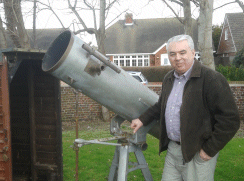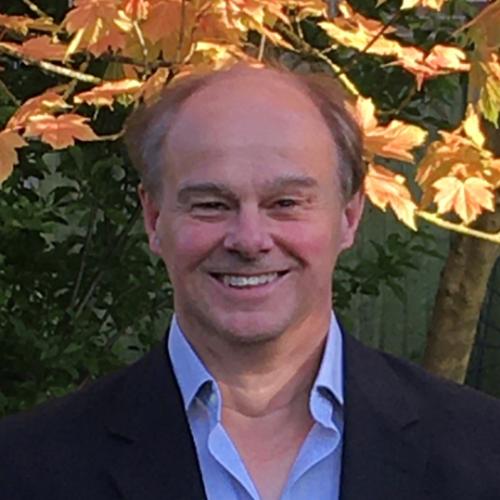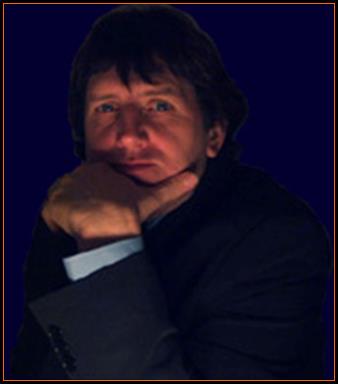Welcome to Carolian Astronomy Society in Kidderminster
Your local Astronomy Group in the Wyre Forest and surrounding areas.
The Carolian Astronomy Society (CAS) is based in Kidderminster, Worcestershire UK. Membership is open to any individuals interested in Astronomy who support and wish to further the Objectives of the Society. We welcome new members, particularly the less experienced and newcomers to our fascinating hobby.
If you would like to email us please send to info@carolianastro.co.uk, or to speak to us please telephone 07821 896 304 (Michael Bryce – Website and Social Media Secretary).
Next Carolian AS Meeting:
Carolian Astronomy Society meet at Oldfield Hall, King Charles I School, Comberton Road, KIDDERMINSTER. DY10 1XA. Meetings are open to anyone with an interest in Astronomy and Space exploration. Come along and meet other Astronomers in your local area.
Wednesday 12 November
Spaceflight Author Ben Evans with a talk on Apollo 12.
Apollo 12 (14–24 November 1969) was the sixth crewed space flight in the United States Apollo program and the second to land on the Moon. It was launched on 14 November 1969, by NASA from the Kennedy Space Center in Florida.
Wednesday 8 October
Rob Januszewski. Chair of Bromsgrove Astronomical Society with a talk on The Future of Amateur Astronomy.
Wednesday 10 September
Our speaker for September is our very own David Hodgson who will be giving us a talk on ‘The Antikythera Mechanism’. The Antikythera Mechanism was discovered in a shipwreck of the coast of Greece in the early part of the 20th century. It is an amazing device built from gears and cogwheels which is able to predict the movement of the Heavens, and has been considered to be the world’s first analogue computer.
Wednesday 9 July
Our next meeting is on Wednesday 9th July at 7:30pm and will be our Annual General Meeting. I do hope as many of you as possible will attend this meeting which will be held in the Oldfield Hall at King Charles I School as usual. The AGM is required by UK Law every year for the continued running of the Society.
As per the proposed agenda, we will have the Chair’s report and the Treasurer’s report and accounts, followed by the election of the members of the Committee. Existing committee members officially stand down at the meeting but can stay on if available and elected. However, we very much welcome newcomers to the committee to help prevent stagnation or repetitiveness. This is your chance to become involved with the running of the Society, as committee roles are open to all Society Members. We will also discuss the Society lecture programme for the 2025-2026 season, so please think about topics or speakers you would like to be included on the programme.
The AGM is expected to take no more than an hour, so as per last year’s AGM, Dr Steve Barrett (University of Liverpool) will give a short talk over Zoom following the conclusion of the AGM business.
Wednesday 11 June
This month we will be joined by a familiar face to many of us at Carolian. Gary Poyner will be talking to us on the subject:
Variable Stars , How and why they vary.
Profile:

My first observations were made with a small 60mm Object Glass bought for me for my 7th birthday in 1965, along with a copy of Nortons Star Atlas. Once my parents realised that I was serious about astronomy, they quickly upgraded me to a superb 6″ (15cm) f8 Charles Frank reflector, which introduced me to the wonders of Planetary observing – and in particular Jupiter. In 1970 I joined the Birmingham Astronomical Society as a 12 year old junior member, but I only remained for one year -I did learn a lot in that time though. It was to be another 8 years before I joined another group – The Chelmsley AS (now the Heart of England AS.
Please visit Gary’s website for more info at https://garypoyner.wixsite.com/variablestars/profile
Wednesday 14 May
Our speaker for this month’s meeting is none other than our own Michael Bryce with a talk entitled “The Camera in Space”.

Michael has been interested in Astronomy for as long as he can remember and has been a Member of Carolian AS for several years, and a member of other astronomical societies since he was a teenager. Michael’s main interest has always been about space exploration, both about human space flight mainly in Earth orbit and the robotic spacecraft exploring the Solar System.
Michael’s other interest is Photography, and he is also a Member of Stourport Camera Club. To combine these interests this talk promises to be fascinating insight into the equipment, limitations and of course imagery of human space flight. It concentrates on the photography of Astronauts in the early days of space exploration from NASA’s Project Mercury to Project Apollo between 1961 and 1972.
Wednesday 9 April
This months speaker is Carl Gethin. His talk is entitled “The Goodwill Moon Rock”. This talk is about an Apollo moon rock that went on tour which a our speaker saw and inspired him to travel to America and meet various astronauts.
Wednesday 12 March

Our speaker this time will be Dr. Martin Braddock, who visited us last June, and his talk is entitled: A Bit Of A Dust Up: Hazards and Opportunities For Farming On The Moon.
Martin is both a Fellow of the Royal Astronomical Society and of the Royal Society of Biology. He has founded his own consultancy to help companies understand the science behind their business. He is an active member of the Mansfield and Sutton Astronomical Society in Nottinghamshire and of Newton’s Astronomical Society at Woolsthorpe, Lincolnshire.
I hope to see as many of you who can make it, and please remember your mug for the refreshments.
Wednesday 12 February
This months Speaker is local spaceflight author Ben Evans who will present a talk about Spacewalking. In 1965 Russian Cosmonaut Alexei Leonov perforemed the very first pioneering spacewalk. Ben will cover spacewalks from NASA Astronauts beginning with Gemini, the Apollo moon landings, the Shuttle, Mir and ISS and plans for Artemis.
Previous Meetings:
Wednesday 8 January 2025
This time we have a “Double Act” for you in the form of Sue and Rob Dipple from Bromsgrove Astronomical Society with a talk entitled “The Leviathan of Parsonstown”. For details about the Leviathan please visit https://en.wikipedia.org/wiki/Leviathan_of_Parsonstown
I look forward to seeing you all for our first meeting of the New Year 2025.
Wednesday 11 December

Our speaker on this occasion is Andrew Lound, an old friend of the society who always gives us excellent, colourful talks. His talk this time is on the Tunguska event and is called “A Fire in the Sky”:
In 1908 a fireball raced through the deep blue skies of northern Russia ending with a massive explosion. Witnessed by numerous people this event became known as one of the great mysteries of the 20th Century. The name Tunguska conjures up thoughts of alien spacecraft, black holes, anti-matter and fear. In this dramatic telling of the Tunguska story brought up to date with the latest research, the whole incident investigated with rare images, video and a dramatic and entertaining performance. Will you ever feel safe again?
Wednesday 13 November
Our next meeting takes place on Wednesday 9 October at 7:30 pm. Doors open at 7:15.
Our Speaker this time is Professor Nial Tanvir of the University of Leicester with a talk entitled “Making Waves”

The collision of two neutron stars, 140 million light years away, created waves among the astronomical community not just for what it told us about the stellar interaction itself but also for how it was observed and analysed. Professor Nial Tanvir from the University of Leicester’s School of Physics and Astronomy was one of the key figures in this event.
Professor Tanvir has a fascination for gamma-ray bursts (GRB), the enormous, distant explosions which provide insight into the deepest depths – and hence the earliest history – of the universe. Back in 2009 he led a team which identified what was then the most distant object ever identified, a GRB with a redshift of 8.2 about 13 billion light years away.
Four years later, Professor Tanvir made another step forward, leading a team which used data from the Hubble Space Telescope to identify the first known kilonova. This is the immediate after-effect of a short duration gamma-ray burst (SGRB), an intense flash lasting for just a couple of seconds. It was theorised that SGRBs – and hence kilonovae – might be caused by the collision of two extremely massive but incredibly compact stellar objects such as two neutron stars (or a neutron star and a black hole).
Such collisions are hugely important because they offer a potential answer to one of the great outstanding questions of physics: where do heavy elements come from? Elements heavier than iron (called r-process elements, meaning rapid neutron capture) aren’t created inside stars like lighter elements. But they must be created somehow, somewhere – and neutron star mergers are likely candidates. Added to which, such collisions should be a rich source of gravitational waves.
On 17 August 2017, two facilities – the Laser Interferometer Gravitational-wave Observatory (LIGO) in the USA and the Virgo interferometer in Italy – identified a gravitational wave source which correlated with gamma rays detected by NASA’s Fermi Space Telescope. Professor Tanvir was at the time principal investigator on a project called VINROUGE which was using the VISTA facility in Chile, the world’s most powerful near-infra-red survey telescope, to search gravitational wave events for evidence of a kilonova.
“We were really excited when we first got notification that a neutron star merger had been detected by LIGO, and immediately triggered observations on several telescopes in Chile to search for the explosion that we expected it to produce,” Professor Tanvir recalls. “In the end we stayed up all night analysing the images as they came in, and it was remarkable how well the observations matched the theoretical predictions that had been made.”
The LIGO/Virgo source was tracked down to the galaxy NGC 4993 so NASA’s orbiting Swift observatory, designed for fast response to such discoveries, was immediately pointed in that direction.
Wednesday 9 October
Our next meeting takes place on Wednesday 9 October at 7:30 pm. Doors open at 7:15. Our Speaker for tonight is Mike Frost. Mike will be his talk entitled “Erwin Finlay Freundlich, Einstein’s Collaborator”. Mike is a long time friend of the Society and his talks are always well received. Detailas of his talk are as follows:
Erwin Finlay Freundlich, Einstein’s Collaborator – a talk by Mike Frost
Erwin Finlay Freundlich was a German astronomer. In the early years of his career he was a colleague of Albert Einstein, and was closely involved in the calculations and observations which proved Einstein’s General Theory of Relativity.
He then pursued a peripatetic career in Berlin, Istanbul and Prague. As World War 2 loomed, his family faced a terrifying journey across Europe to escape Hitler’s clutches. Freundlich ended up in Scotland, where he spent the rest of his academic career at St Andrews University.
Erwin’s is a life entwined in the great movements of the twentieth century – political, social, scientific and cultural. I’ve worked with his family and with people who knew him at St Andrews to bring you his story.
Wednesday 11 September
Our first meeting of the 2024 – 2025 Season takes place on Wednesday 11 September at 7:30 pm. Doors open at 7:15. As last time, our meeting venue is Oldfield Hall, King Charles I School. The speaker for the evening is our own David Hodgson who will give a presentation about George Isaak, Physicist and Astronomer.
From Wikipedia:
Isaak was born in Poland on 7 March 1933. His family moved to Germany after the Second World War and to Australia in 1950. Isaak studied at the University of Melbourne, achieving his Bachelor of Science (BSc) in 1955 and Master of Science (MSc) in 1958. A spell in industry followed, in which Isaak worked for ICI in Australia 1959-1960 during which time he patented a spectrophotometer for very high-resolution optical spectroscopy, using the resonant scattering of light by atoms. In 1961 Isaak returned to science at the University of Birmingham from whom he received his PhD in 1966, and where he stayed until his retirement in 1996, at this time taking up an Adjunct Faculty position at the University of Minnesota. Isaak remained active in scientific endeavours until the time of his death. Isaak married once to Umit, a fellow physicist at Birmingham in 1964.
Everyone Welcome. Please remember to bring a mug if you would like tea or coffee.
Privacy Statement
To comply with new General Data Protection Regulation (GDPR) the Society Privacy statement can be found here.
If you require any further information please email us at info@carolianastro.co.uk.
We also have a Facebook group page at https://www.facebook.com/groups/carolianastro/
